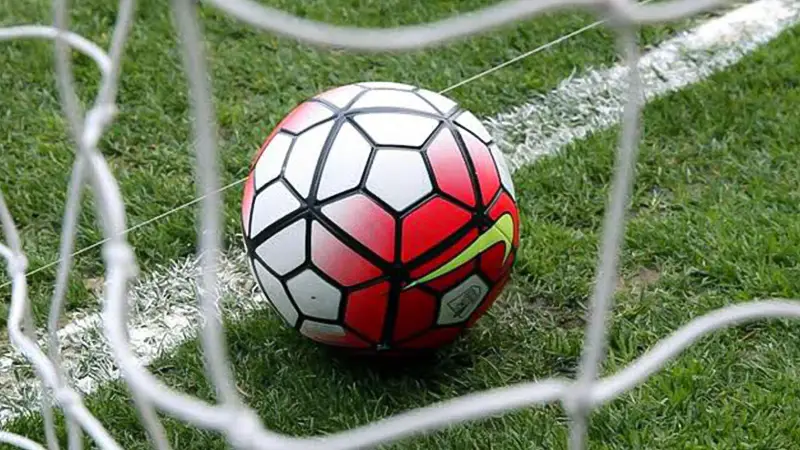In the fast-paced world of soccer, where split-second decisions can make or break a game, goal line technology has emerged as a game-changer. It’s a system designed to assist referees in determining whether the ball has crossed the goal line, ensuring accurate and fair outcomes.
By using advanced cameras and sensors, this technology provides instant feedback, leaving no room for doubt or controversy.
Understanding the basics of goal line technology in soccer is crucial for players, coaches, and fans alike. From how it works to its impact on the game, delving into this innovative tool can enhance one’s appreciation for the sport’s evolving landscape.
So, let’s explore the ins and outs of goal line technology and its significance in the world of soccer.
What is Goal Line Technology? A brief history of GLT
To grasp the significance of goal line technology (GLT) in soccer, one must understand its evolution and the impact it has on the game. Here’s a brief history of how GLT came into play:
Introduction of GLT
GLT was introduced to soccer to resolve contentious goal-line decisions. It offers a definitive ruling on whether the ball has fully crossed the goal line or not, aiding match officials in making accurate calls.
FIFA’s Approval
FIFA, the governing body of soccer, approved the use of GLT in major competitions after successful testing. This milestone marked a shift towards enhancing the sport’s fairness and accuracy.
Implementation in Top Leagues
Following FIFA’s endorsement, several top leagues and tournaments worldwide integrated GLT into their matches to uphold the integrity of the game. Leagues like the English Premier League and Serie A embraced the technology to ensure precise goal decisions.
Technological Components
GLT systems typically involve a network of high-speed cameras and sensors strategically placed around the goal area. These devices work in unison to capture various angles and trajectories of the ball, enabling precise goal line determinations.
Evolution and Advancements
Over the years, GLT has undergone significant advancements to enhance its accuracy and efficiency. From refining calibration processes to integrating real-time data analysis, the technology continues to evolve, setting new standards in decision-making precision.
How Goal Line Technology Works
Goal Line Technology (GLT) works by employing advanced systems to determine with precision whether a ball has crossed the goal line.
This technology assists referees in making crucial goal-line decisions accurately and efficiently, reducing human error and enhancing the fairness of the game.
Overview of the Technology
The technology primarily consists of high-speed cameras positioned around the stadium, which track the ball’s movement in real-time. These cameras capture multiple angles of the goal line to ensure accurate decision-making.
Additionally, sensors integrated into the goalposts provide instant feedback to the referee’s watch within a fraction of a second once a goal is scored.
Camera-Based Systems
Camera-based systems utilize multiple high-speed cameras placed strategically around the goalposts to track the ball’s position accurately.
These cameras capture the ball’s trajectory and determine if it fully crossed the goal line, providing visual evidence to assist referees in making the right call.
Chip-Embedded Ball Systems
Some goal line technology systems involve embedding a microchip within the soccer ball to track its exact position relative to the goal line.
When the entire ball passes over the line, a signal is sent to the referee to confirm a goal has been scored. This technology offers a different approach to ensuring accurate goal decisions.
Implementation in Soccer
Goal Line Technology (GLT) revolutionizes soccer officiating, ensuring precise goal decisions. Adopted globally in top leagues and tournaments, it enhances fairness and accuracy.
FIFA’s Adoption and Rules
When it comes to Goal Line Technology (GLT) in soccer, FIFA has played a pivotal role in its adoption and implementation. The organization approved the use of goal line technology to ensure fair play and accurate match outcomes.
FIFA has set specific rules and guidelines for the deployment of GLT in major competitions, emphasizing its importance in reducing errors and improving the overall integrity of the game.
Impact on Game Accuracy and Fairness
The integration of Goal Line Technology in soccer has significantly enhanced the accuracy and fairness of match decisions. By providing real-time tracking of the ball’s position in relation to the goal line, GLT systems assist referees in making precise goal judgments promptly.
This technological advancement has minimized controversies surrounding disputed goals and helped uphold the integrity of the sport by ensuring that correct decisions are made based on accurate data.
Major Competitions Using Goal Line Technology
In club competitions, Goal Line Technology (GLT) has been implemented to ensure accurate goal decisions. Leagues such as the English Premier League, Serie A, Bundesliga, and La Liga have adopted GLT to enhance the fairness of matches.
The technology provides instant feedback to referees, helping them determine with precision whether the ball has crossed the goal line.
This implementation has significantly reduced controversies and errors in goal decisions, contributing to a more just outcome in club competitions.
National Team Competitions
In national team competitions like the FIFA World Cup and UEFA European Championship, Goal Line Technology (GLT) plays a crucial role in ensuring fair play and accurate match outcomes.
Implementation in Major Tournaments
FIFA, the governing body of international soccer, mandates the use of GLT in prestigious events such as the FIFA World Cup. By implementing GLT in these competitions, FIFA maintains a high standard of officiating that helps prevent controversial goal decisions.
Enhancing Match Integrity
GLT in national team competitions enhances the integrity of the game by providing referees with immediate and accurate information regarding goal-line incidents. This technology reduces disputes and ensures that the correct decisions are made in critical moments.
Impact on Tournament Results
The use of GLT in national team competitions has significantly impacted the outcome of matches by accurately determining whether a ball has crossed the goal line. This precision contributes to the overall fairness of the tournament and upholds the spirit of competition.
Fair Play Principles
By embracing GLT in major international tournaments, national teams adhere to the principles of fair play and sportsmanship. The technology helps maintain a level playing field by validating goal-scoring opportunities without bias or error.
Positive Reception
The introduction of GLT in national team competitions has been positively received by players, coaches, and fans alike. The transparency and accuracy provided by this technology contribute to the excitement and credibility of these prestigious events.
Advantages of Goal Line Technology
Goal Line Technology (GLT) offers various benefits that enhance the overall soccer experience for everyone involved. From improving referee decisions to elevating the fan experience, the adoption of GLT in major competitions has significantly impacted the game.
Increasing Accuracy
GLT ensures precise and reliable determinations of whether a goal has been scored, ultimately reducing human error and enhancing the accuracy of referee decisions.
Instant Feedback
Referees benefit from instantaneous notifications when the ball crosses the goal line, allowing for immediate decisions to be made without room for interpretation or doubt.
Clarity and Transparency
For fans, GLT provides clear and transparent goal-line verdicts, eliminating controversies surrounding disputed goals and adding to the excitement and credibility of the game.
Engaging Viewing Experience
By offering conclusive evidence of goal decisions, GLT enriches the viewing experience for spectators, keeping them engaged and invested in the match without uncertainties over goal rulings.
Criticisms and Challenges
Despite its benefits, Goal Line Technology (GLT) in soccer faces criticisms and challenges:
Concerns About the Human Element
When it comes to Goal Line Technology in soccer, some traditionalists express concerns about the impact on the human element in decision-making. They argue that relying solely on technology could diminish the role of referees and the emotional dynamics of the game.
Critics worry that the emphasis on precision might overshadow the human judgment factor that has been a part of the sport for decades.
Technical Failures and Limitations
Despite its advantages, Goal Line Technology is not without flaws. Technical failures can occur, leading to delays in decision-making or inaccurate results.
Weather conditions like heavy rain or extreme sunlight can also affect the functionality of the technology, raising doubts about its reliability in all circumstances.
Additionally, there is the ongoing debate about the cost of implementing and maintaining such systems, especially for smaller clubs or leagues with limited resources.
The Future of Goal Line Technology
The future of Goal Line Technology (GLT) in soccer is poised for further innovation and integration:
Innovations on the Horizon
Exciting advancements are on the horizon for Goal Line Technology (GLT) in soccer. Innovations such as video assistant referees (VAR) are being explored to complement GLT and provide even more accurate decision-making in critical match situations.
The integration of artificial intelligence (AI) algorithms is also being considered to enhance the speed and precision of goal detection, further reducing errors and controversies on the field.
Integration with Other Technologies
The future of Goal Line Technology lies in its seamless integration with other cutting-edge technologies.
Collaborations with virtual reality (VR) and augmented reality (AR) systems could revolutionize how fans experience matches, offering immersive perspectives and interactive replays that showcase the impact of GLT in real time.
By synergizing with player tracking systems and data analytics, GLT can contribute to comprehensive performance analysis, player development, and tactical insights that shape the future of soccer as a technologically advanced sport.
Frequently Asked Questions
How does Goal Line Technology (GLT) enhance accuracy in soccer?
Goal Line Technology uses multiple high-speed cameras to determine if the entire ball has crossed the goal line, ensuring fair decisions in goal scoring situations. The system can provide instant feedback to referees, reducing disputes and improving accuracy in critical moments.
What are the criticisms of Goal Line Technology?
Critics highlight concerns about the reliance on technology over human judgment and potential technical failures that could impact game outcomes.
While GLT increases accuracy, some argue it diminishes the human element in decision-making, leading to debates about the balance between technology and on-field officiating.
What innovations are shaping the future of Goal Line Technology?
Upcoming innovations like Video Assistant Referees (VAR) and Artificial Intelligence (AI) integration aim to further enhance decision-making accuracy in soccer.
The integration of GLT with Virtual Reality (VR), Augmented Reality (AR), player tracking systems, and data analytics is set to revolutionize fan experiences, performance analysis, and player development in the sport.
These advancements promise a more immersive and dynamic soccer experience for fans and players alike.
Conclusion
Connecting technology with soccer has not only enhanced the fairness of the game but also revolutionized the viewing experience for fans worldwide.
As innovations like video assistant referees (VAR), artificial intelligence (AI) integration, virtual reality (VR), and augmented reality (AR) continue to shape the future of Goal Line Technology (GLT), the sport evolves to reach new heights of accuracy and spectator engagement.
With the integration of player tracking systems and data analytics, the relationship between technology and soccer is set to redefine performance analysis and player development, contributing to a more immersive and dynamic soccer experience for fans and players alike.
The evolution of Goal Line Technology in soccer has significantly improved the accuracy of officiating decisions and created a more engaging experience for fans globally.
By incorporating player tracking systems and data analytics, technology is reshaping performance analysis and player development, enhancing the overall soccer experience for both spectators and athletes.








Brice Petersen